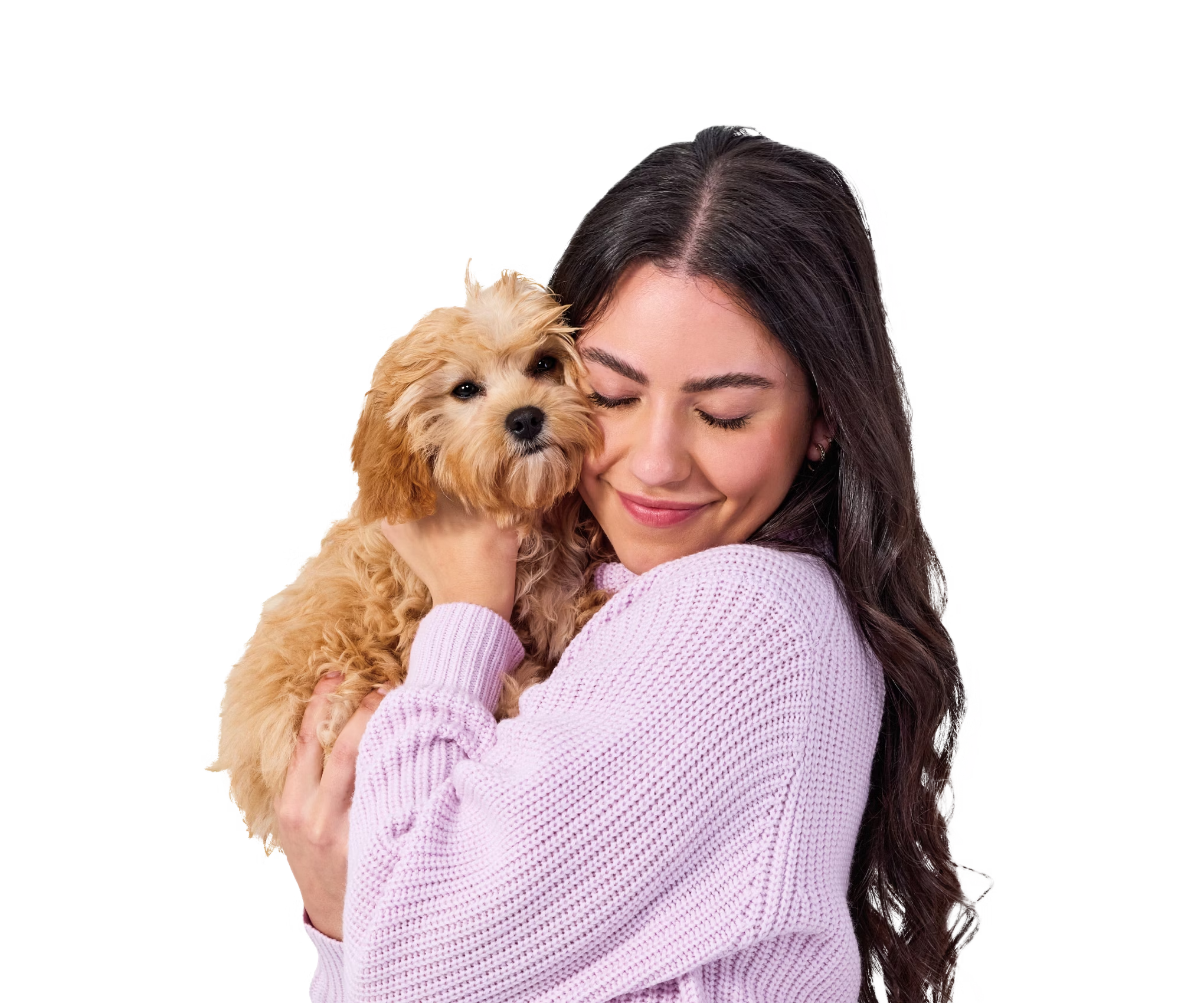Disproportionate Dwarfism (Discovered in the Dogo Argentino)
Disproportionate Dwarfism is a disorder that affects bone and cartilage development, leading to changes in limb length and conformation, body length and height, and head shape. The associated genetic variant has been identified in the Dogo Argentino.
Found in
1 in 28,000 dogs
in our testing
Key Signs
Shortened limbs, Angular limb deformity, Shortened body, Reduced height, Disproportionately large head, Gait abnormalities
Age of Onset
0 to 2 yrs
Juvenile onset
Inheritance
Autosomal Recessive
For autosomal recessive disorders, dogs with two copies of the variant are at risk of developing the condition. Dogs with one copy of the variant are considered carriers and are usually not at risk of developing the disorder. However, carriers of some complex variants grouped in this category may be associated with a low risk of developing the disorder. Individuals with one or two copies may pass the disorder-associated variant to their puppies if bred.
Likelihood of the Condition
High likelihood
At risk dogs are highly likely to show signs of this disease in their lifetime.
What to Do
Here’s how to care for a dog with Disproportionate Dwarfism
Partner with your veterinarian to make a plan regarding your dog’s well-being, including any insights provided through genetic testing. If your pet is at risk or is showing signs of this disorder, then the first step is to speak with your veterinarian.
For Veterinarians
Here’s what a vet needs to know about Disproportionate Dwarfism
Disproportionate Dwarfism is a disorder characterized by skeletal deformities involving the limbs and general body proportions. Key signs may be noticeable in affected dogs by 2 to 3 months of age. Affected dogs can have shorter than normal limbs with outward angular rotation of the forelimbs (carpus valgus), shorter height and body length than the typical breed standard, and a disproportionately large head. The head shape may appear more broad with a slightly up-turned nose and a pronounced vertical groove between the eyes. An affected dog’s height at the shoulders can be approximately 6 to 7 cm shorter than the breed’s ideal height. Gait abnormalities may result from the forelimb deformities and other joint abnormalities, like elbow incongruity, which become evident during development. These skeletal abnormalities can lead to early onset arthritis in affected dogs.
A full assessment of the skeletal features should be performed for individuals affected by this disorder. Corrective orthopedic surgeries may be considered depending on severity and the type of abnormalities present. Affected dogs should be monitored for arthritis secondary to altered biomechanics and, when appropriate, treatment implemented. This may include environmental modification, nutraceuticals, nonsteroidal anti-inflammatory drugs, and maintaining a lean body weight for optimal joint health.
For Breeders
Planning to breed a dog with this genetic variant?
There are many responsibilities to consider when breeding dogs. Regardless of test results it is important that your dog is in good general health and that you are in a position to care for the puppies if new responsible owners are not found. For first time or novice breeders, advice can be found at most kennel club websites.
This disorder is autosomal recessive, meaning two copies of the variant are needed for a dog to be at an elevated risk for being diagnosed with the condition. A carrier dog with one copy of the Disproportionate Dwarfism (Discovered in the Dogo Argentino) variant can be safely bred with a clear dog with no copies of the Disproportionate Dwarfism (Discovered in the Dogo Argentino) variant. About half of the puppies will have one copy (carriers) and half will have no copies of the variant. Furthermore, a dog with two copies of the Disproportionate Dwarfism (Discovered in the Dogo Argentino) variant can be safely bred with a clear dog. The resulting puppies will all be carriers. Puppies in a litter which is expected to contain carriers should be tested prior to breeding. Carrier to carrier matings are not advised as the resulting litter may contain affected puppies. Please note: It is possible that disorder signs similar to the ones associated with this Disproportionate Dwarfism variant could develop due to a different genetic or clinical cause.
Technical Details
| Gene | PRKG2 |
|---|---|
| Variant | C>A |
| Chromosome | 32 |
| Coordinate | 5,299,068 |
All coordinates reference CanFam3.1
We’ve spent the past 20+ years devoted to DNA. Our team of scientists and vets have spent decades developing the most accurate pet DNA test. Because every pet deserves to have their whole story told. We’ve collaborated with leading academic institutions, innovative research labs, and Banfield Pet Hospital™ to make our process exceptionally precise, fast, and affordable.

References & Credit
Credit to our scientific colleagues:
Rudd Garces, G., Turba, M.E., Muracchini, M., Diana, A., Jagannathan, V., Gentilini, F., Leeb, T. (2021). PRKG2 Splice Site Variant in Dogo Argentino Dogs with Disproportionate Dwarfism. Genes (Basel), 12(10), 1489. View the article









